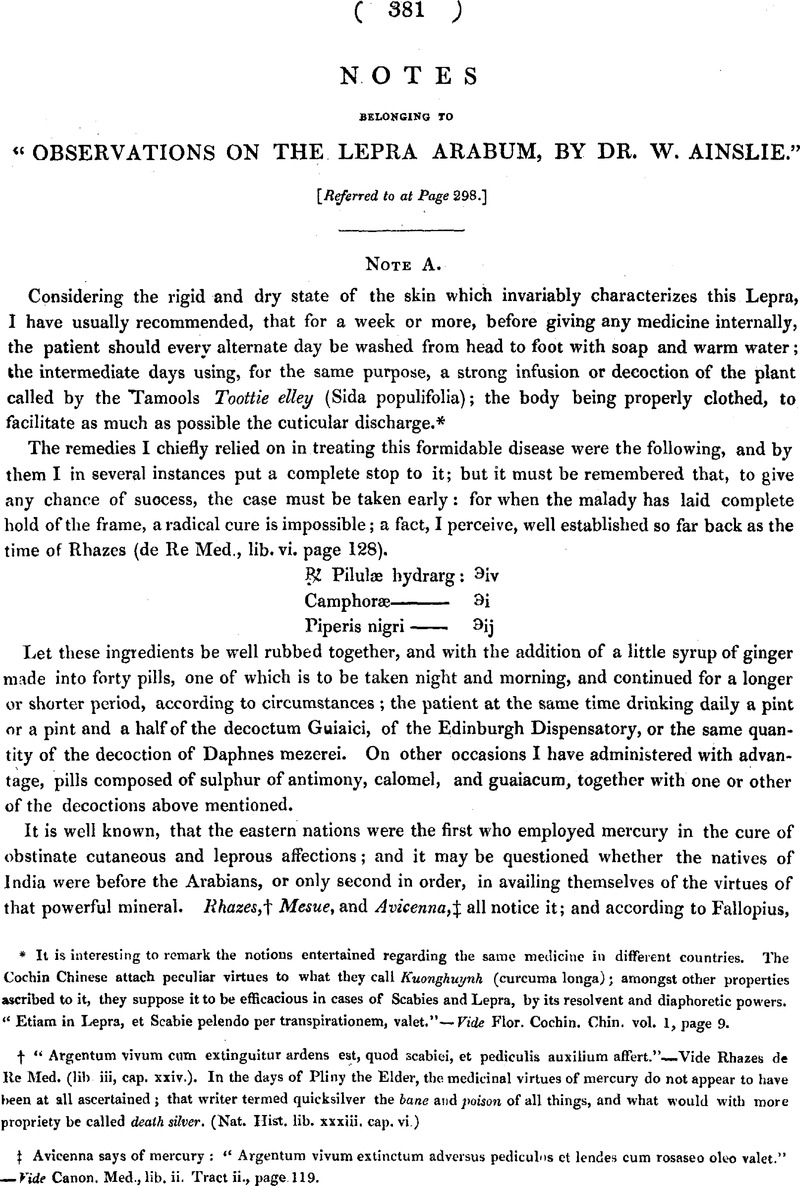No CrossRef data available.
Article contents
Observations on the Lepra Arabum
Published online by Cambridge University Press: 24 September 2009
Abstract

- Type
- Notes
- Information
- Transactions of the Royal Asiatic Society of Great Britain and Ireland , Volume 1 , January 1827 , pp. 381 - 382
- Copyright
- Copyright © The Royal Asiatic Society 1827
References
page 381 note * It is interesting to remark the notions entertained regarding the same medicine in different countries. The Cochin Chinese attach peculiar virtues to what they call Kuonghuynh (curcuma longa); amongst other properties ascribed to it, they suppose it to be efficacious in cases of Scabies and Lepra, by its resolvent and diaphoretic powers. “Etiam in Lepra, et Scabie pelendo per transpirationem, valet.”—Vide Flor. Cochin. Chin. vol. 1, page 9.Google Scholar
page 381 note † “Argentum vivum cum extinguitur ardens est, quod scabiei, et pediculis auxilium affert.”—Vide Rhazes de Re Med. (lib iii, cap. xxiv.). In the days of Pliny the Elder, the medicinal virtues of mercury do not appear to have been at all ascertained; that writer termed quicksilver the bane and poison of all things, and what would with more propriety be called death silver. (Nat. Hist. lib. xxxiii. cap. vi)
page 381 note ‡ Avicenna says of mercury: “Argentum vivum extinctum adversus pediculos et lendes cum rosaseo oleo valet.”—Vide Canon. Med., lib. ii. Tract ii., page 119.
page 382 note * The first person who cured Syphilis by means of mercury, appears to have been Berengarius Jacobus, a surgeon of Carpi, who died in 1527.




